
Photographer Focuses on Desert Detritus
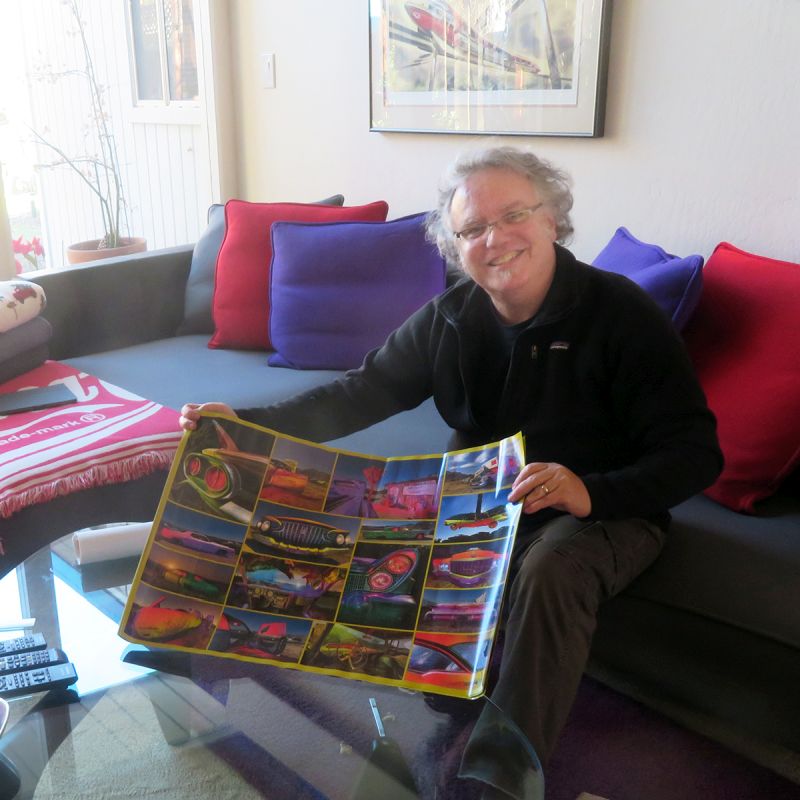 |
Back in 1990 when cameras shot film and no one had heard the term 'urban exploration,' Troy Paiva was climbing over, under, and through what he has called “lost America,” camera and strobe light in hand.
A derelict motel on the Salton Sea. The projectionist’s booth at the shuttered Burlingame drive-in. Rusting Air Force fighter jets in a graveyard for aircraft.
“If it’s abandoned, I’ve done it,” Troy says.
Paiva grew up in an Eichler home in Burlingame and has been living since 1993 in another in Redwood City. “It’s part of who I am, these houses,” he says.
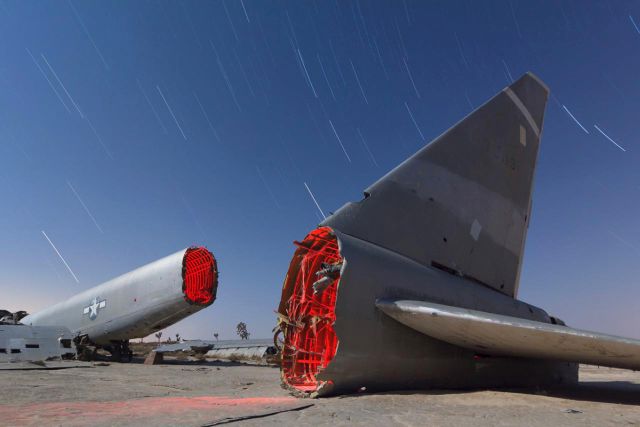 |
But it is when he is away from home seeking out junkyards and other mysterious places for his night photography that he most comes alive as an artist.
Or maybe, you might say, he becomes 'undead' as an artist. In talking about his art, Troy describes himself both as a vampire – and a ghost.
In his 2019 photo book, ‘Boneyard: SoCal’s Aircraft Graveyards at Night,’ Troy describes his regimen: “I spend as many of the daylight hours as I can, restlessly dozing like a vampire in my cool, dark motel room, waiting for the night.”
Oooh.
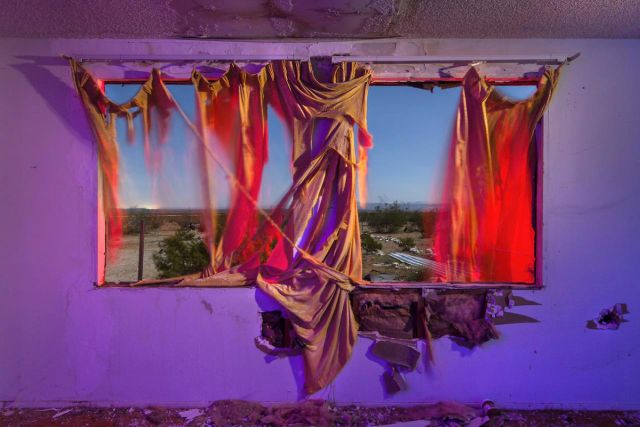 |
“I shoot at night and I work by the light of the moon, the full moon. And I do lighting,” he says.
Selecting a subject, a car that’s been abandoned so long that things are growing in it; or a supersonic aircraft, once sleek but now decaying with “nature taking over,” he sets up his camera for a long exposure, up to 45 minutes.
Then Troy goes into action, illuminating the object with colored LED flashlights. It gives his photos a unique look, weirdly beautiful, otherworldly.
“It’s all about the placement of the lights,” he says. “And what you don’t light is important too.”
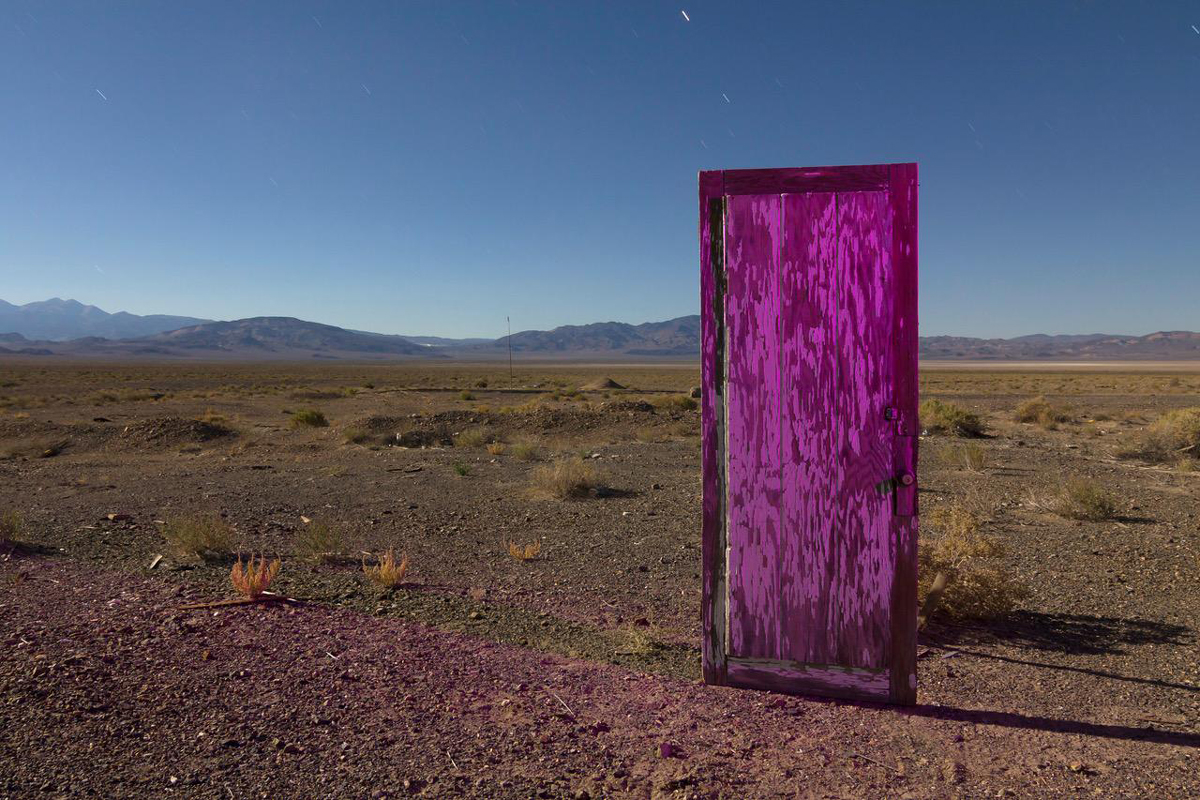 |
Seen large, his photos often look more like paintings, thanks to the layering of the light, which is called “light painting.”
“I use a hand-held flashlight from outside the frame to light the scene like a stage set.” He goes on to explain. “It doesn’t look real because I light the subject from angles that don’t usually happen in the natural world. Careful use of light will bring out a car’s innate sculptural qualities," he says.
But what you don’t see in the photos is Troy himself, even though he was moving past the shutter. Thanks to the long exposure, his image does not register.
“I’m there and you don’t see me, just like a ghost,” he says.
In recent years more and more people have started photographing forlorn sites at night, Paiva says. Some have been inspired by his work, which for years attracted eyes when he posted it online.
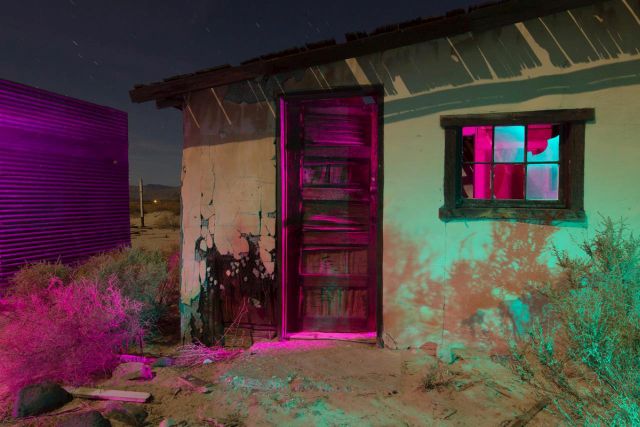 |
“I was way ahead of the curve on this stuff,” Troy says. “There was a time there when I was the guy who did this. Now, everyone does it. There’s a whole Internet subculture of people who do this. ‘Urban Exploration.’”
“Usually you gravitate to what places to use. To me, it’s the desert with that wide-open space.”
Troy, who worked for many years in toy design at Galoob Toys in South San Francisco, and as a designer and writer in other venues, traces his interest in exploration to his boyhood.
“I’ve always been this sneaky kid who snuck into abandoned places. Kids go in those places and throw rocks. That’s what kids do in old abandoned places,” he says.
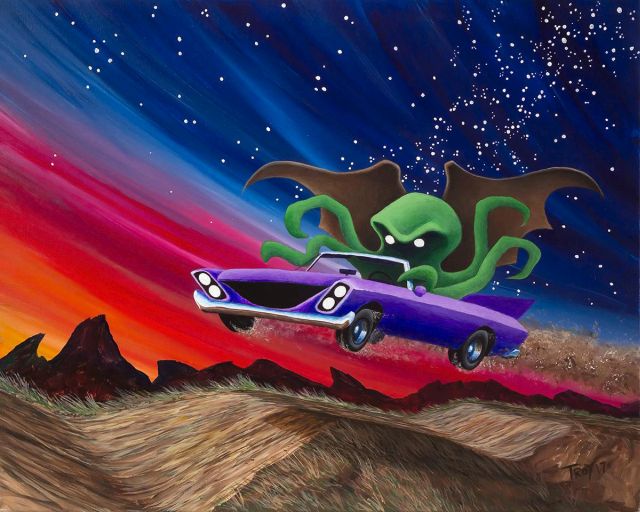 |
When he was a bit older it would be road trips with friends, “Route 66, Barstow, abandoned drive-ins,” sometimes in his brother’s 1961 Cadillac.
Troy got into night photography – and photography itself – when his brother was taking a class in the subject at the Academy of Art in San Francisco.
Over the years Troy has produced three books of his photos (a fourth, 'Night Salvage: Haunting SoCal's Automotive Graveyards,' will be out soon), and his photos have been exhibited many times, in the Bay Area and nationally and internationally. His latest publication, which just arrived at retail outlets, is a tricky but striking jigsaw puzzle made up of his car images, ‘Junkyard Lights.’
He also sells individual prints through his website.
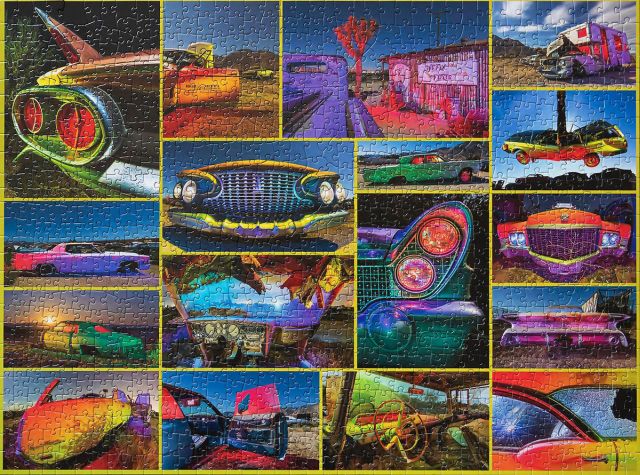 |
Like most working artists, Troy continues to hustle – taking advantage of his talents as a painter to teach 'paint nights' at restaurants mostly on the Peninsula. What, you’ve never painted a picture!? No worry. Troy will walk you through it while you wine and dine.
The firm behind it, Yaymaker, offers hundreds of different designs, landscapes largely, and Troy has even designed some himself.
“I love the idea of standing up in front of 40 people and doing a painting, and making them do it too. It’s not stand-up comedy, but it’s very much a branch of that tree,” Troy says.
Troy, have you ever done art photography of your Eichler at night?
“No, I never have, because they’re not abandoned,” he says. “They’re too valuable.”
- ‹ previous
- 458 of 677
- next ›



